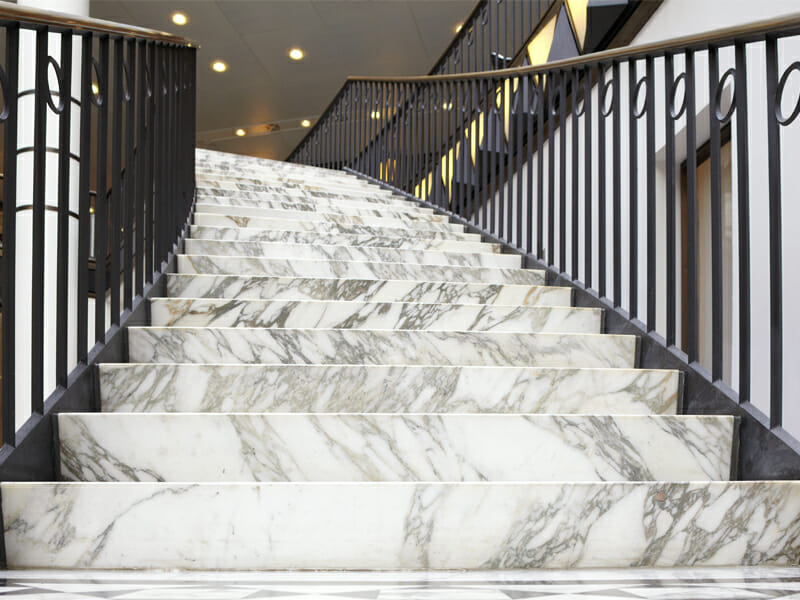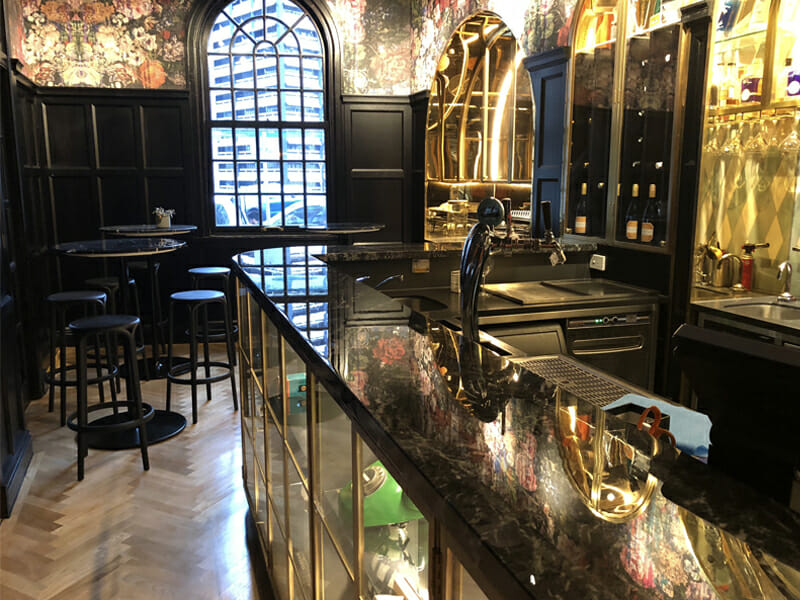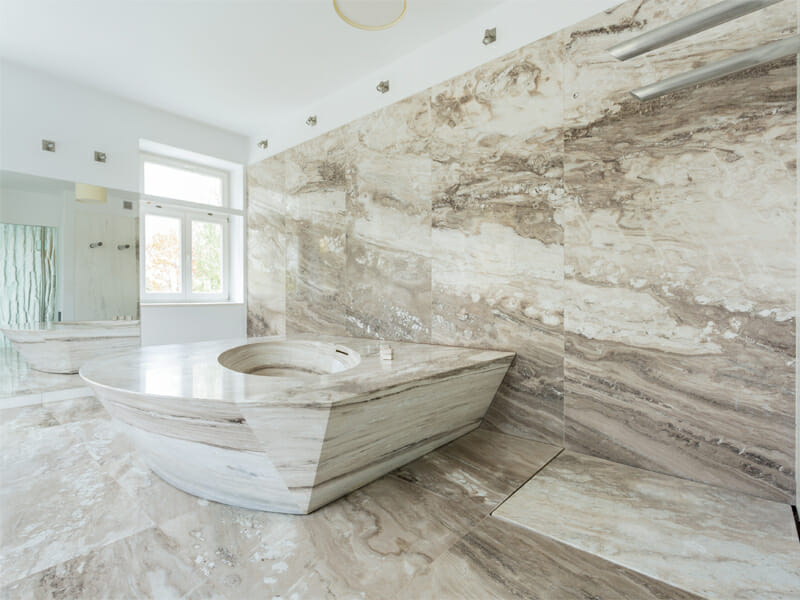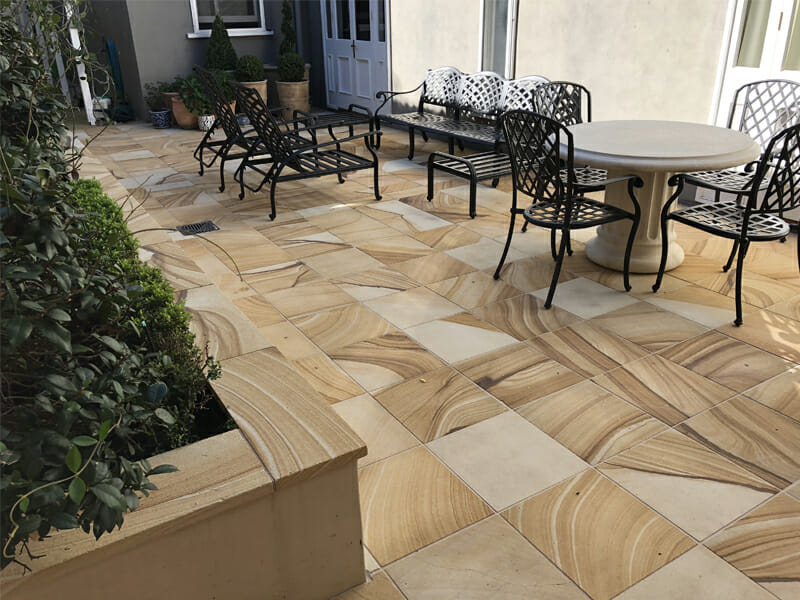
Location of the stone will determine which stone to choose as it needs to be suitable for the purpose. Granite rather than marble is more suitable for kitchen benchtops and bathroom vanities as they are not as susceptible to etching and staining. Considerations:
- Is the location indoors or outdoors?
- Will the stone be used for functional or aesthetic purposes?
- Will the stone be in a kitchen, bathroom or foyer?
- Is the area wet or dry?
- Will the stone be exposed to constant foot traffic?
- Will the stone be exposed to acidic foods and liquids, cosmetics?
- Will the stone be exposed to hot pots?
- Will the stone be exposed to soap scum?
- Does the stone need to be slip resistant?
EMAIL OR CALL US NOW! 1300 627 626

Structure will determine which stone to choose as the weight of the stone must correlate with the architectural design. The size, area and height are important as these may affect whether the stone can be easily accessed for polishing, sealing or cleaning. Considerations:
- Will the stone be required to support a structure or weight such as steps?
- Will the structure such as cupboards or a table base be capable of supporting the stone?
- Will the stone be accessible for polishing, repair, sealing and cleaning?
- Will the stone be suited to the size of the area such as a floor?
- Will the stone be too thick or thin for the use?
- Will the stone suit the structural design of the room?
EMAIL OR CALL US NOW! 1300 627 626

Colour may be determined by the stone you choose, or alternatively the colour you require may determine your choice of stone. Marble, granite, limestone, travertine, onyx and sandstone are popular stone choices that come in a variety of colours. Considerations:
- Does the stone to be used come in the required colour?
- Does the colour appear to enlarge or reduce the space?
- Is there natural light or is it a dark space?
- What type of artificial lights will be used that may affect the colour?
- Will the colour show scratches, stains, dirt or dust?
- Does the room need to feel warm or cool?
- Does the colour suit the purpose of the room?
EMAIL OR CALL US NOW! 1300 627 626

Pattern will be determined by the type of stone chosen. Marble has a veining effect, whereas granite has a more flecked appearance. Some marbles are more veined than others. Keep in mind that if using natural stones there will be variations between tiles and slabs due to the minerals in the stone. Every stone is different which is why natural stone is so unique. If a more uniform appearance is required an engineered stone such as Caesarstone, Essastone, Quantum Quartz, Silestone, Smartstone and HanStone may be required. Considerations:
- Will the pattern match with the rest of the décor?
- Will the pattern blend with adjoining areas?
- Will the pattern appear to enlarge or reduce the size of the room?
- How will the pattern look if there are many tiles in a large area such a living room?
EMAIL OR CALL US NOW! 1300 627 626

Quality and quantity of the stone chosen are important as these will affect the cost of your build or renovation. Considerations:
- Is the colour of the slab fairly consistent or does it vary greatly from one end to the other?
- Do the tiles have a smooth arris (edge) or a sharp edge (sharp are cheaper)?
- Are there enough slabs in the same stone with the same colour and design to complete the job?
- Is the stone thick enough for the job as a thin slab may not be strong enough?
- Does the stone have a manufacturer’s seal applied in the factory?
- Are there holes and fissures in the slab and have they been resined for extra strength? (Dark drip marks on the rough edge of the slab means it has been resined)
- Is the gloss finish consistent or are there small dull parts? (Some minerals in the stone will polish differently to others. Look across the slab and check reflection)
EMAIL OR CALL US NOW! 1300 627 626

Finish will be determined by the purpose of the stone and the type of stone chosen. Marble can be polished to a high gloss whereas sandstone cannot. A marble vanity in a bathroom would look appealing with a high gloss, whereas an outdoor, sandstone area would be better left matt or textured to enhance slip resistance. A low sheen finish is practical for a high traffic area, whereas a high gloss is ideal in a low traffic area and in a shower. Considerations:
- Does the stone have a functional or aesthetic purpose?
- Will the stone be exposed to water?
- Does the stone require slip resistance?
- Will the stone be subject to dirt from foot traffic?
- Will the area be subject to high or low foot traffic?
- Will the stone take a polish?
- Will the finish compliment the décor?
- Is the stone in a bathroom where soap scum may build up?
- Is the stone in a kitchen where acidic liquids may be spilled?
EMAIL OR CALL US NOW! 1300 627 626

Maintenance is an important consideration, as it will determine the true cost of the stone. If the correct stone is chosen with an appropriate finish, cleaning and maintenance will be manageable and affordable. If the wrong stone and finish are chosen maintenance could be costly and ineffective. If design aspects override practicality then maintenance costs must be budgeted for. A high gloss finish may be desired on a marble floor in a foyer with high foot traffic therefore the cost of regular polishing or resurfacing must be taken into account. Marble benchtops subject to etching from acidic substances and staining from oils may need more regular polishing to retain its appeal. Considerations
- How often will the stone need to be cleaned?
- Will the stone need to be sealed?
- How often will the stone need to be repolished?
- Are special products required for regular maintenance?
- Will professional maintenance be required?
EMAIL OR CALL US NOW! 1300 627 626

Kitchen areas are subject to constant spillage of acidic substances so they require stone that is hardwearing and resistant to absorption. Marble will etch with acidic substances, which are often found in the kitchen. Granite is scratch and heat resistant, virtually non-absorbent once sealed, resistant to most chemicals and a better choice for the kitchen than marble and limestone.
Bathroom areas are subject to the build up of soap scum, oils, dirt and mineral deposits from water so they require stone that is fairly resistant to absorption and can be easily cleaned. Smooth surfaces such as polished marble, limestone or granite are ideal. The size of the tile is also important, particularly where drains are located. Small tiles are more easily laid when the fall towards the drain is steep.
Outdoor areas will weather if exposed to constant sun, rain, pollution and chemically treated pool water so a stone that wears well, is slip resistant and has a matt finish such as sandstone is ideal.
EMAIL OR CALL US NOW! 1300 627 626
MASTER BUILDERS QLD MEMBER

HIA QLD MEMBER

TUFFSKIN APPROVED APPLICATOR

AQUAMIX APPROVED APPLICATOR

DRYTREAT APPROVED APPLICATOR


